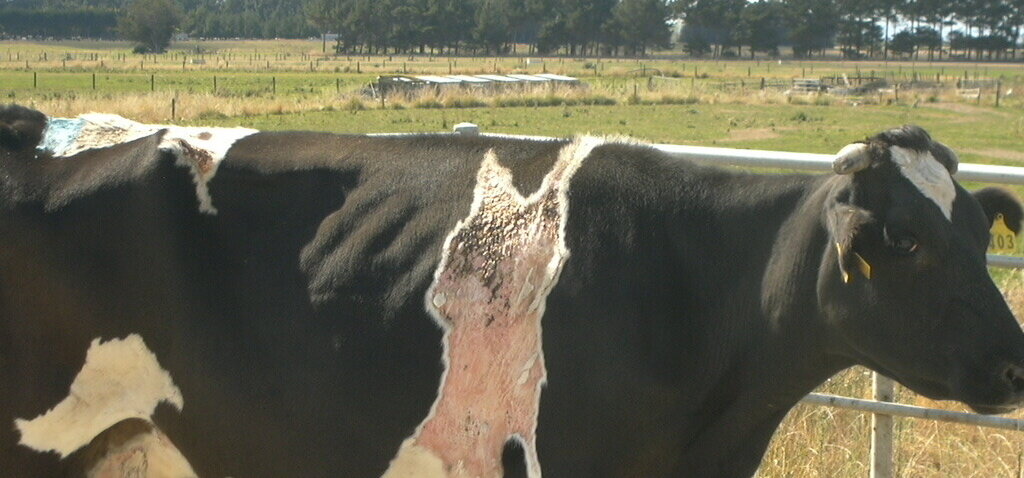Spring Eczema: A Common Challenge for Ruminants in New Zealand
November 2023
Spring eczema, also known as photosensitivity, is a well-recognised issue that affects ruminants in various regions of New Zealand. This condition is characterized by the development of photosensitivity lesions on unpigmented areas of the skin and udder. While it is often referred to as eczema, spring eczema is actually a reaction to sunlight and can occur throughout the year. However, it is more prevalent during spring when pastures are lush and rapidly growing.
Diagnosing spring eczema can be challenging, as it often presents itself when the sun's intensity is not at its peak. Initially, affected animals may appear unwell and exhibit a decreased appetite. It is only later that the classic sunburn-like lesions become apparent. Furthermore, spring eczema tends to target individual animals rather than affecting entire herds.
Several factors contribute to the development of spring eczema in ruminants. One of these factors is the abundance of a substance called phylloerythrin in the blood. This substance is normally absorbed and eliminated by the liver via bile secretion. However, when there is liver damage, the process is disrupted, leading to the accumulation of phylloerythrin in the blood. This accumulation then triggers photosensitisation, resulting in a condition similar to facial eczema.
Additionally, high levels of nitrogen in lush pastures can reduce the ruminant’s ability to absorb vitamin A. Vitamin A plays a crucial role in maintaining a healthy liver, and its deficiency can contribute to the development of spring eczema. Furthermore, ruminants may develop photosensitivity by consuming or absorbing through the skin a photosensitising substance present in certain common weeds.
Preventing and managing spring eczema in ruminants requires a multi-faceted approach. It is essential to maintain a balanced diet for the animals, ensuring that they receive adequate vitamins and minerals. This includes supplementing their diet with vitamin A, which can help support liver function and minimize the risk of photosensitivity. Additionally, farmers should be vigilant in identifying and removing photosensitizing weeds from pastures to reduce the chances of ruminants ingesting or coming into contact with them.
Regular liver function testing is also crucial in the prevention and management of spring eczema. By monitoring liver health, farmers can detect any potential issues early on and take proactive measures to minimize the risk of photosensitivity. Implementing liver support strategies, such as providing appropriate minerals and trace elements, can help protect the liver from damage and ensure proper processing of phylloerythrin.
By implementing a comprehensive prevention and management strategy, farmers can help mitigate the risk of spring eczema in their herds/flocks and ensure the health and well-being of their animals.
References
https://www.biocalfelectrolytes.nz/rearing-tips/spring-eczema-in-calves


